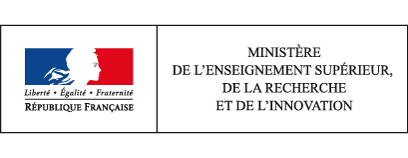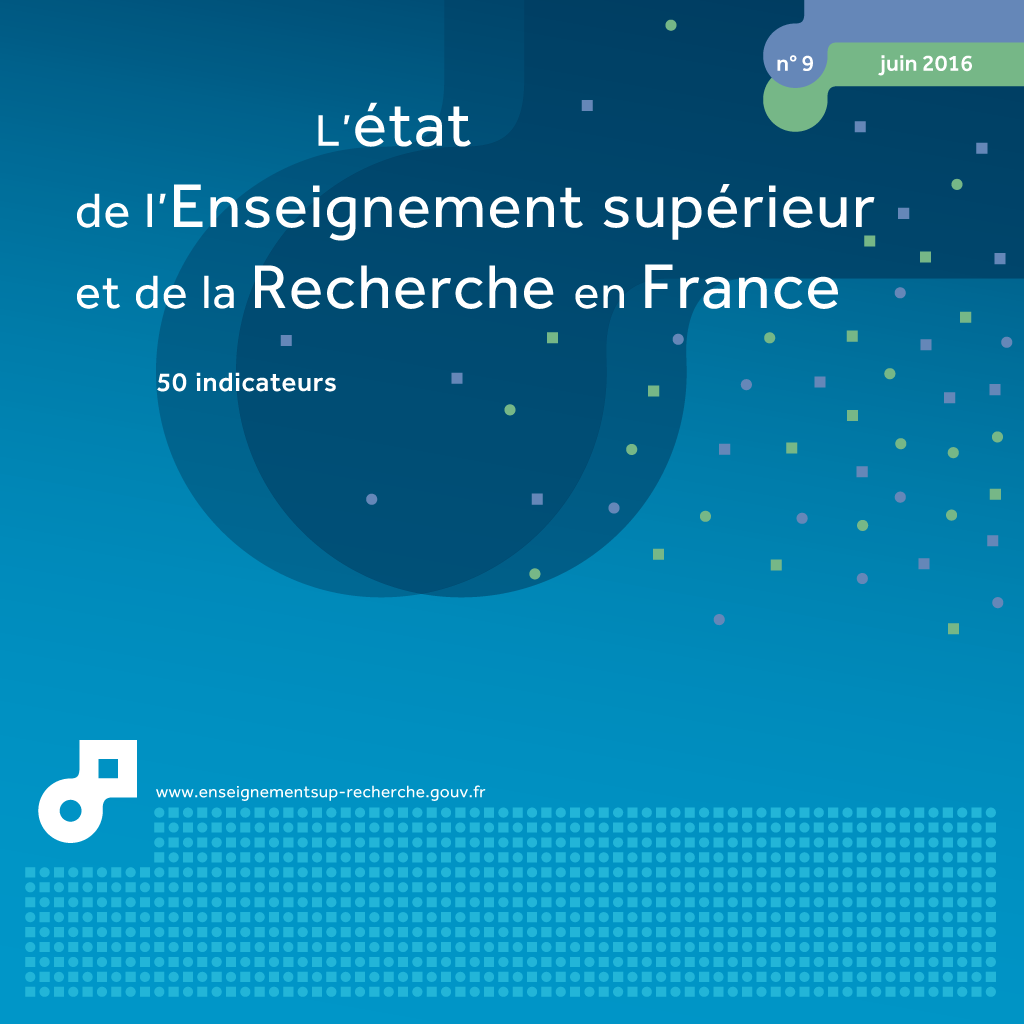37 gender equality in research
This page has been updated. Read 36. gender equality in research in Higher education & research in France, facts and figures 10th edition - June 2017
In 2013, women represented 30% of all research personnel, and a little over a quarter of researchers. Furthermore, 40% of government research personnel are women compared to 22% in business enterprises, a contrast that is not unique to France. The proportions differ according to the field of research, with the most women being present in medicine, chemistry and agronomy.
In 2013, 575,000 people in France were participating in R&D activities and of these research personnel, 30% were women (table 37.01). They were better represented in government (40%) (public bodies, higher education institutions and not-for-profit institutions) than in business enterprises (22%).
Proportionally fewer women work in researcher positions (26%) than as research ancillary staff (36% female). This contrast in female presence with regard to the qualifications of R&D personnel is greater in government than in business enterprises. In government, the proportion of women in ancillary roles is 50% compared to 35% for researchers, whereas these proportions are 27% and 20% respectively in businesses.
The male-female ratio varies according to the research field. The proportion of women is greater in medicine, chemistry and agronomy, natural outlets for their educational training, than in aerospace, automotive and digital technologies. In 2013, therefore, there were equal numbers of men and women in research teams at the French National Institute of Health and Medical Research (INSERM), the Institut Pasteur and the French National Institute for Agricultural Research (INRA) (chart 37.02).
In contrast, they represented only 16% of researchers at the French National Aerospace Research Centre (ONERA) and 20% at the French National Institute for Computer Science and Applied Mathematics (INRIA). In business enterprises, there are more female than male researchers in 'Pharmacy' (59%), whereas their numbers are nearly equal in 'Chemistry' (47%) (chart 37.03). However, women are poorly represented in 'Aeronautics and space construction' (17%), 'IT activities' and 'Manufacturing of motor vehicles' (13%) and 'Manufacture of machines and equipment' (8%).
Between 2011 and 2013, women's representation in France among all R&D personnel remained stable at around 30%. Nevertheless, care must be taken when interpreting these figures as the proportion of women increased over the same period both in businesses (+0.4 points) and government (+0.1 point). The stagnation observed overall is due to a structural effect: the increasing weight of business enterprises in relation to government, combined with a lower proportion of women in business compared to government. This phenomenon, which is true of all R&D personnel, is particularly relevant when we consider researchers alone. Between 2011 and 2013, the level of female researchers fell by -0.1 point for all researchers in France, whereas it increased in both businesses and government (+0.2 points).
These trends in France are similar to those observed in other OECD countries. Everywhere, we see an under-representation of women in research teams, especially in business enterprises (chart 37.04). Portugal, Estonia and Slovakia, however, have near equality between men and women. In these countries, women represent more than 40% of all researchers. In these three countries, at least 70% of reseaerchers work in the State or higher education sectors. In contrast, in South Korea, Japan, the Netherlands and France, women represent 15%, 18%, 24% and 26% of researchers respectively. In each of these countries, 60% of researchers or more work in business enterprises.
OECD.
How to cite this paper :
close
Key figures
Whole of France
Whole of France
Whole of France
Whole of France
Whole of France
Whole of France
Whole of France
Whole of France
Whole of France
Whole of France
Whole of France
Whole of France
Whole of France
Whole of France
Whole of France
Whole of France
Whole of France
Whole of France
Whole of France
Whole of France
Whole of France
Whole of France
Whole of France
Whole of France
Whole of France
37.01 Total R&D personnel and share of women in 2013 (headcount in thousands, %) 1
1 Semi-finalised data.
You can embed this table to your website or your blog by copying the HTML code and pasting it into the source code of your website / blog:
close
37.02 Share of women in research personnel in government in 2013 (%) 1
1 Semi-finalised data.
You can embed this chart to your website or your blog by copying the HTML code and pasting it into the source code of your website / blog:
close
37.03 Proportion of women in research personnel in business enterprises in 2013 (%) 1
1 Semi-finalised data.
You can embed this chart to your website or your blog by copying the HTML code and pasting it into the source code of your website / blog:
close
37.04 Share of women among researchers in the main OECD countries in 2013 (%)
1 2012 data.
2 2011 data.
You can embed this chart to your website or your blog by copying the HTML code and pasting it into the source code of your website / blog:
close
Related statistical publications
 Etat de l'emploi scientifique en France - L'état de l'emploi scientifique en France - Isabelle Kabla-Langlois (dir.), Louis Meuric (ed.), Marie-Hélène Prieur (ed.), collective workJulien CalmandChristophe DixteLaurent FauvetDiane MarlatLaurent PerrainAnna TestasCynthia WavoékéOdile Wolber - September 2016
Etat de l'emploi scientifique en France - L'état de l'emploi scientifique en France - Isabelle Kabla-Langlois (dir.), Louis Meuric (ed.), Marie-Hélène Prieur (ed.), collective workJulien CalmandChristophe DixteLaurent FauvetDiane MarlatLaurent PerrainAnna TestasCynthia WavoékéOdile Wolber - September 2016 La nouvelle édition 2016 permet de mieux connaître la recherche menée dans les organismes et les établissements d'enseignement supérieur et celle réalisée en entreprise. En effet, le rapport 2016 intègre une approche de l'emploi scientifique par grands champs disciplinaires avec une consolidation ou une mise en cohérence des données portant sur les établissements d'enseignement supérieur, les organismes de recherche (EPST/EPIC) et les entreprises.
Les données statistiques sont présentées selon des périmètres, conventions et unités communs, conformément aux conventions internationales édictées par le manuel de Frascati, dans les limites de la disponibilité des données.
En outre, au-delà de la seule observation statistique, la publication intègre une dimension prospective, qu'il s'agisse du vivier des chercheurs (doctorants) ou des projections de départs en retraite.

 Note d'information SIES 13.03 - Male and female researchers: gender stereotypes at student level - Nicolas Le Ru, Laurent Perrain - April 2013
Note d'information SIES 13.03 - Male and female researchers: gender stereotypes at student level - Nicolas Le Ru, Laurent Perrain - April 2013 Translation
 Etat de l'enseignement supérieur et de la rechercheL'état de l'Enseignement supérieur et de la Recherche en France n°9 - Juin 2016
Etat de l'enseignement supérieur et de la rechercheL'état de l'Enseignement supérieur et de la Recherche en France n°9 - Juin 201637 - la parité dans la recherche - Laurent Perrain






